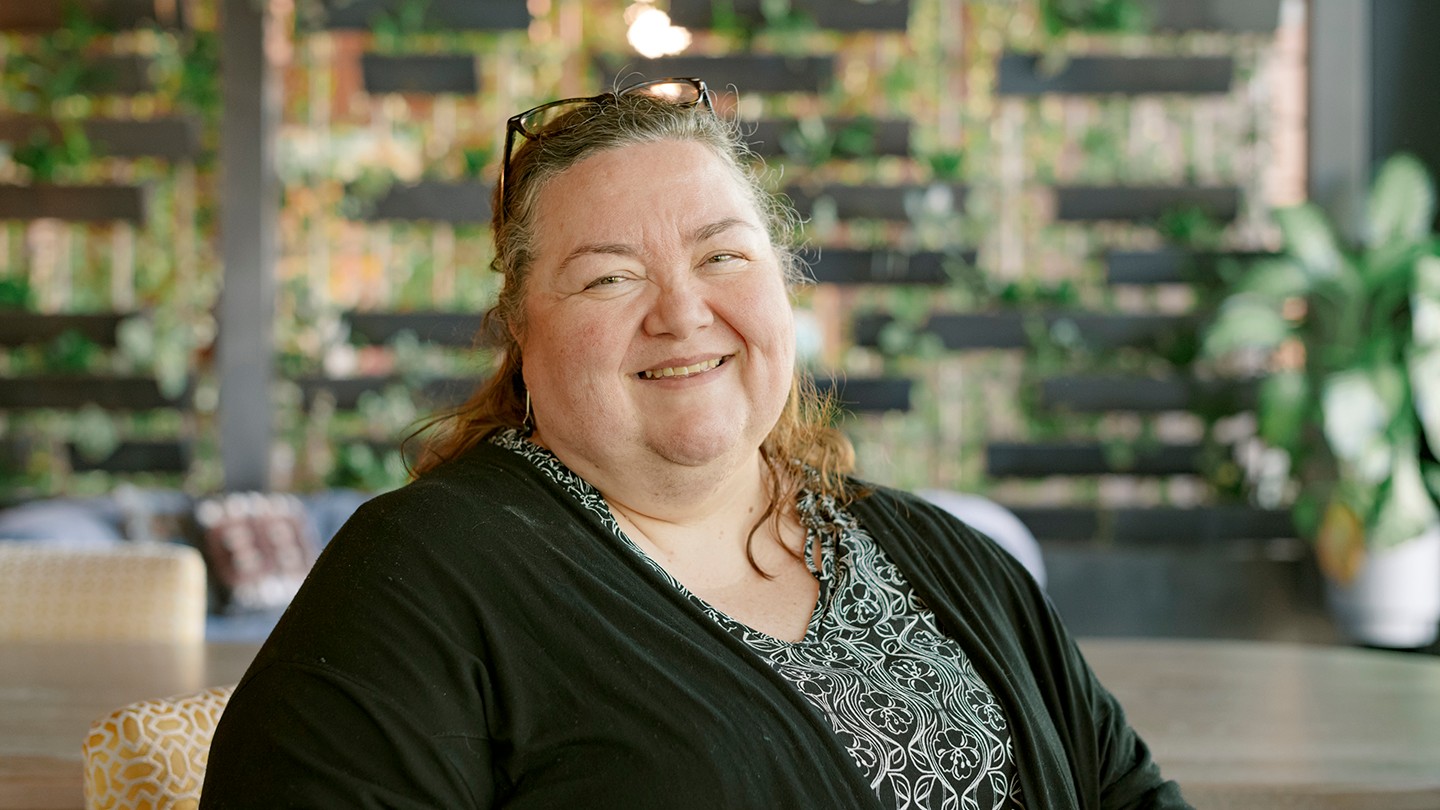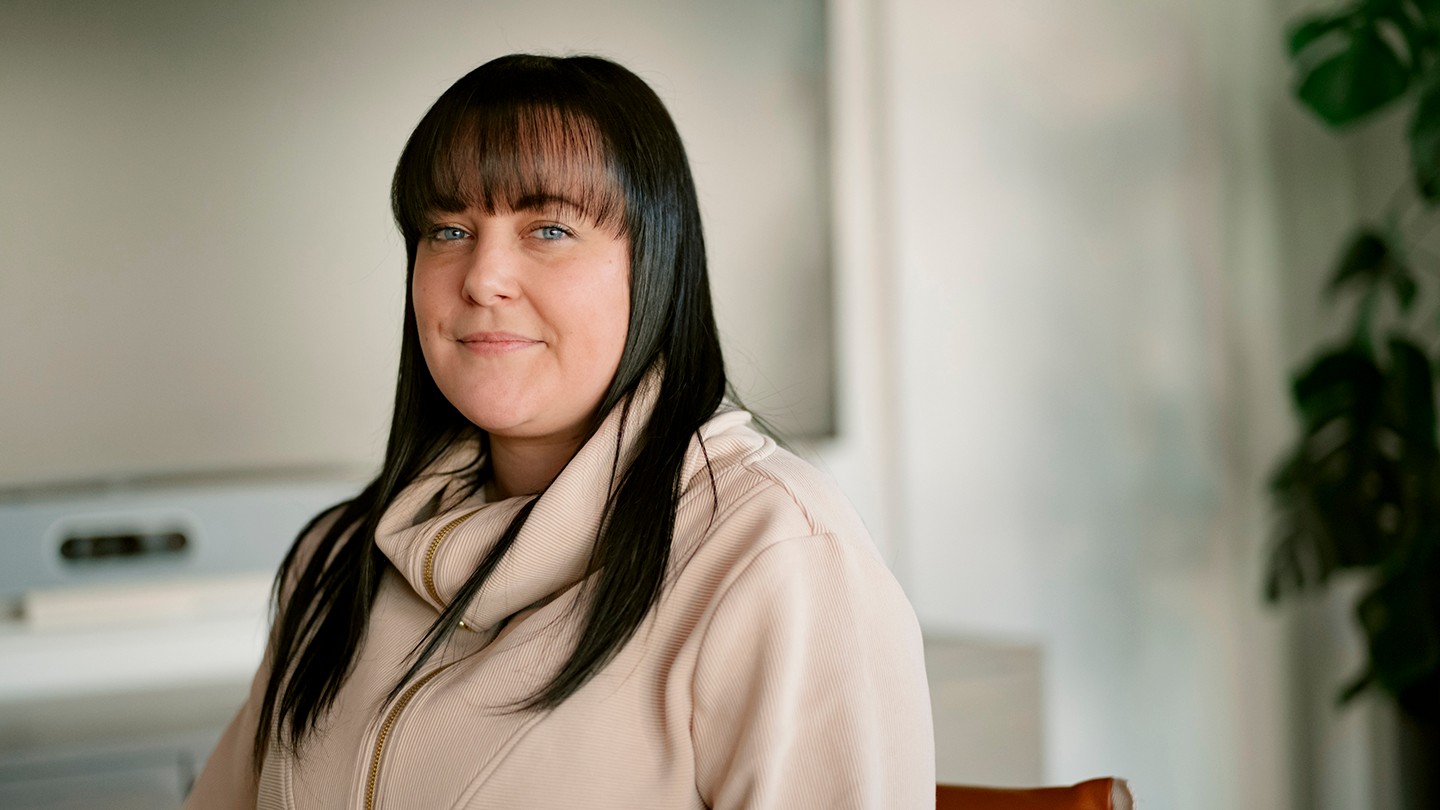
Barclays’ Glasgow campus - one year on
02 March 2023
“The aim was to make this our most sustainable and inclusive campus”
Our flagship Glasgow campus launched just over a year ago and has continued to evolve. Situated on the banks of the Clyde, the campus was built with sustainability and inclusivity in mind, prioritising colleague wellbeing and helping us move closer to our ambition of being a net zero bank by 2050.
We caught up with some of our Glasgow colleagues to take a look at what’s been achieved over the past year, and to discuss the progress that’s been made on-site.
Ron Coghill, Global Head of Capital Projects, and Workplace at Barclays, led the development of our new campus in the city she calls home.
“Originally, we had the desire to build something world class for our colleagues. But we knew we also had a unique opportunity with this site to do something for Glasgow. It has been fantastic seeing it come to life as buildings are finished and people return to the office,” says Coghill, one year after the opening of the campus.
“We wanted to continually enhance our approach to sustainability. We have, for example, far more recycling on site, so we have to constantly evolve and review best practice. But nothing stands still in Barclays!"

Ron Coghill, Global Head of Capital Projects
Coghill worked on the innovative design of the campus with Robert Tulloch, UK Engineering lead at Barclays.
“From the outset, our ambition was to try and achieve operational net zero on the campus, working with local materials and all the new technology on the market like air source heat pumps” he says.
“As an organisation we've got ambitions, targets and a broader strategy around sustainability. But it's also important to assure the local community that we are working to make our campus as sustainable as possible”.

Robert Tulloch, UK Engineering Lead
Our green approach in Glasgow extends beyond the design of the campus. In the year since opening, the ongoing involvement of an on-site Green Team has given colleagues a chance to bring their interest in sustainability to work.
“We try and encourage initiatives at campus level, from litter picks to jumper swaps!” says Lisa Murison, BX Governance Support.
“The Green Team in Glasgow has sparked a lot of interesting conversations. I would say it's got people thinking about the smaller actions in their day-to-day lives and how they contribute to the bigger picture. Whether it's the big things we do in the Sustainability Centre, or reusable containers for food and drink, we’re trying to make it easier for our colleagues to lead more sustainable lives.”


Keeping colleagues enthused about sustainability has been one of Glasgow’s big successes over the past year. Samanta Norbury-Webster is on the Tech Graduate Scheme and has applied her background in ecology to the start of her career at Barclays.
“I wanted to find like-minded individuals that I could talk to about sustainability. I found out that there are a group of very passionate individuals that have come together to promote sustainability issues among colleagues who might not know where to start,” she says. “It could be anything from making sure everyone has access to reusable cups, to raising awareness of the right way to sort recycling. So, I emailed them and got involved.”
Norbury-Webster and colleagues like those in the Green Team have helped to make the first year of the new Glasgow campus even greener, from sustainability initiatives at Christmas to recycling and the introduction of reusable food containers and coffee cups to reduce plastic waste.
Our colleagues are at the heart of the Glasgow campus, a principle that goes back all the way to the beginning of the project.
“The aim was to make this the most accessible and inclusive campus in Barclays’ portfolio,” says Coghill.
“We have worked closely with accessibility consultants, as well as Scottish Autism, implementing their findings around the building to make sure we have significant accommodation for people with a wide range of needs. This is something I am hugely passionate about.”


Sheila McGoldrick, Technical Team Leader at Barclays, has been one of our inclusivity leaders through her involvement in the Autism Working Group.
“We want to make sure the campus is as inclusive an environment as possible for our autistic and neurodiverse colleagues,” she says. “We work closely with neurodiverse groups to ensure all our colleagues are comfortable coming to work. Our key considerations include lighting, sound environment, colours, textures, accessibility via the doors, signage and fire escapes, and the overall design.”
“There are quiet rooms where colleagues with sensory issues can go to drown out some of the background noise. We also have the ability to book specific desks for colleagues that may have issues with lighting, as well as bookable meeting and focus rooms that can be used as and when required.

Sheila McGoldrick, Technical Team Leader
“A lot of consideration went into the texture and artwork used throughout the campus. Some areas are a little brighter and a little lighter than others, but we also have some quieter rooms with plain backgrounds to help support neurodiverse people. We also have Braille available and many features are contactless to aid those with impaired mobility.”
Every toilet facility at the campus has been reviewed to ensure it is touch free and accessible, for example, installing not only cubicles with low noise emission hand driers but some with paper towels (suitable for people sensitive to noise). There are gender-neutral toilets on every floor.
“It has been fantastic to see colleagues being able to use the spaces, fulfil their potentials, and bring their whole selves to work,” says McGoldrick.


By ensuring that sustainability and inclusivity have been at the core of the Glasgow campus project from the very beginning, Coghill and everybody involved in its design, build and implementation have created a workplace that truly brings the best of Barclays to our colleagues and their city.
“If you get it right, as I think we have here, accessible design should only be noticeable to those in the know,” says Coghill.
“Colleagues interact with it in line with their own needs and choices. We have groups we check in with, asking them to feedback on how the buildings work for them. People don’t always use the building as it was designed, but I like to think they’re using it in an even better way.”